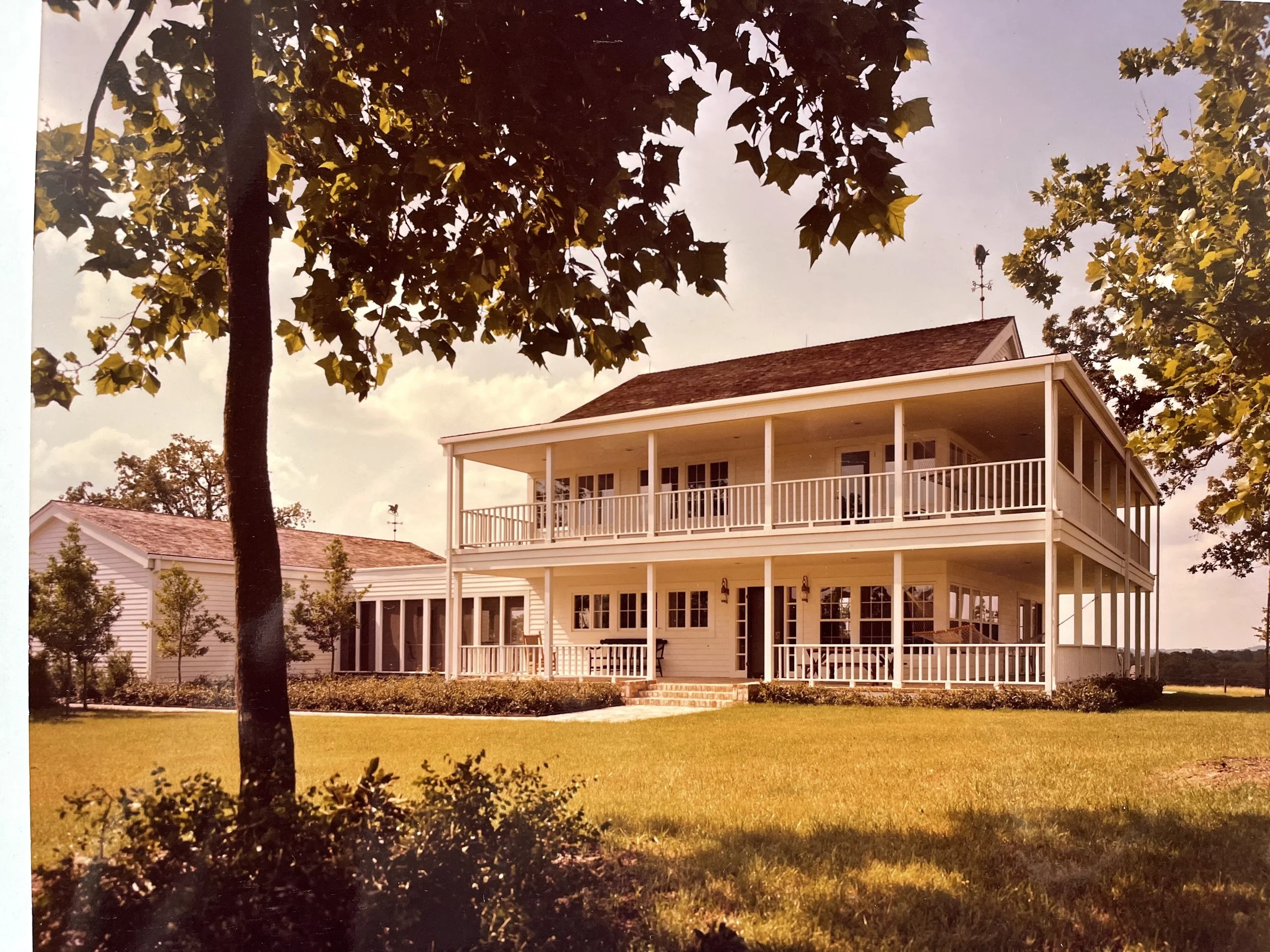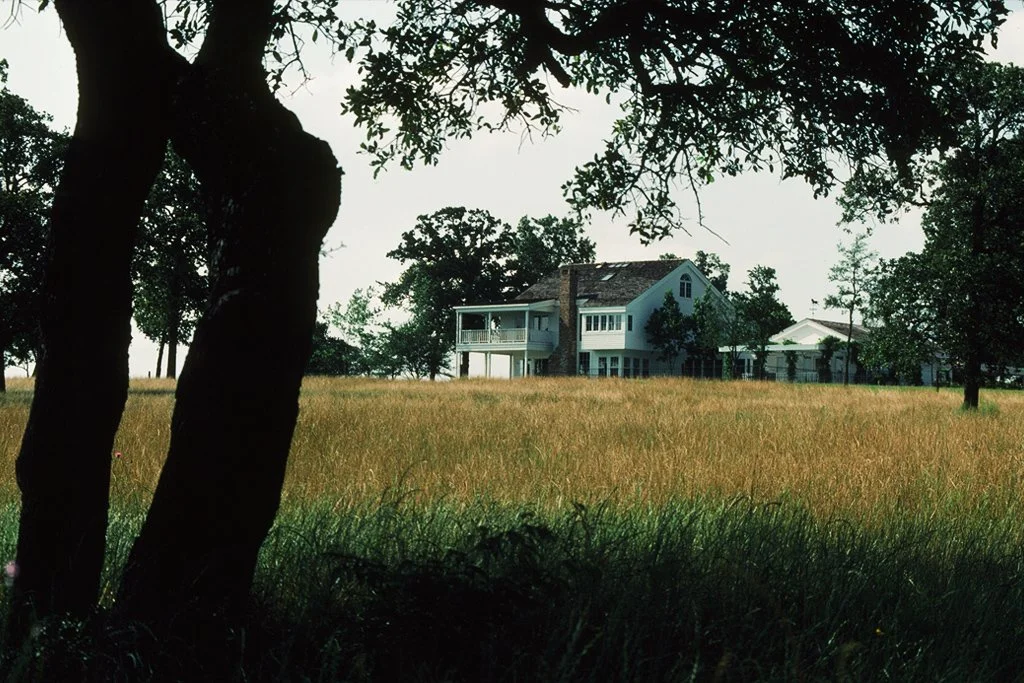Wolff Ranch
Mary and David Wolff’s clapboard country home in Independence is an optical illusion of architecture and environment. High atop a wooded hill on the 1,533-acre Wolff Ranch and surrounded by century-old neighboring farmhouses, the Texas vernacular-style house appears to have always been there. That is the point, but not the reality: The historic-looking structure is new and the towering trees are transplants. The weekend ranch retreat is the answer to the Houston owners’ desire for the best of both worlds, past and present.
“People who see the house say it looks like it has been there for 100 years,” Wolff says. “It looks like it belongs on that hill, even though nothing else was ever there until we built it. Part of that feeling comes from the architecture and part from the landscape. We wanted a natural but tailored feeling with the landscape-not contrived like an English garden, though.”
With those needs in mind, the couple approached architect Donald Jacobs of Sea Ranch, California. Jacobs had never designed an early Texas-style house before —his Sea Ranch designs are contemporary California redwood. But Jacobs’ unfamiliarity with rural Texas was remedied quickly by treks to the Independence and Chapel Hill countryside, where he studied and analyzed historic houses. “My work is primarily in second homes,“ says Jacobs, “where I believed the most important consideration is a feeling of comfort.”
After studying Texas farmhouses, Jacobs was impressed by two things: the small scale of room sizes and the architecture’s intent to capture the breeze and shade out intense sunlight. Without jeopardizing the integrity of the intimate room sizes, Jacobs satisfied the Wolffs’ desire for spaciousness through soaring ceilings and “a contiguous flow of space, one to another.” The second element, a design that catches breezes and blocks the sun, came as more of a challenge. “In California,” the architect says, “we want the opposite results: to keep out the breeze and take in the sun.” His solution, an L-shaped house that traps and funnels wind through a breezeway and picturesque porches whose wide overhangs function as shade, was, he says, “a feat.”
Excerpts from TEXAS HOMES magazine, February 1985.





